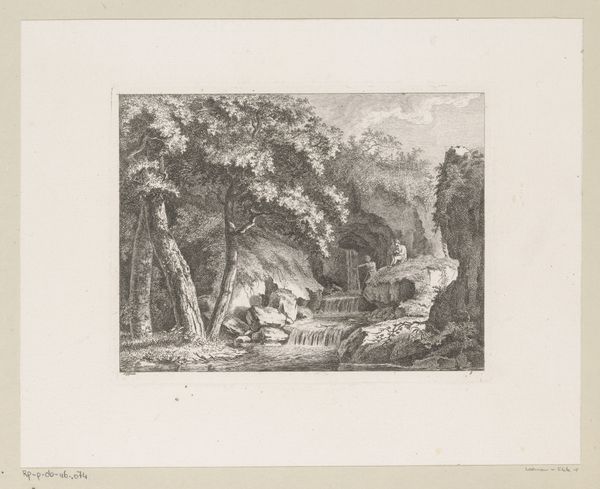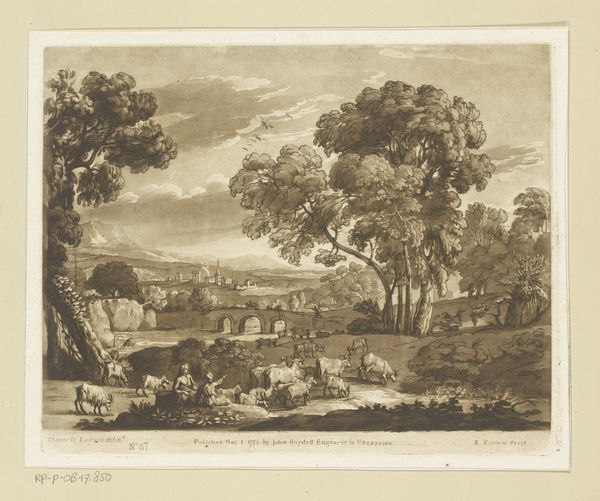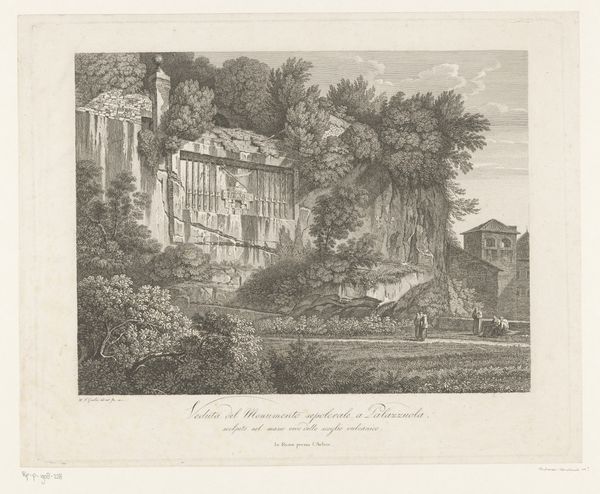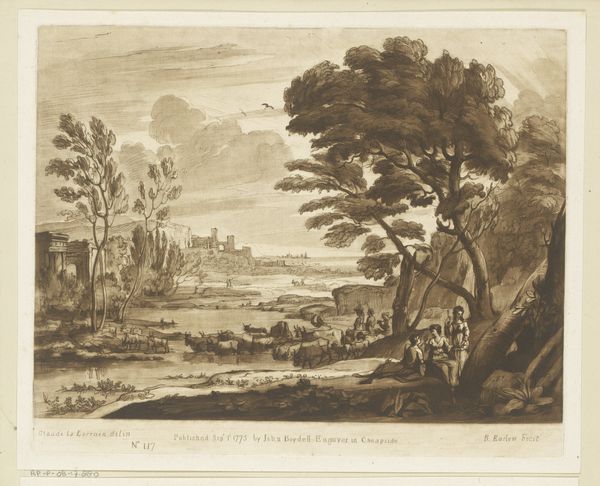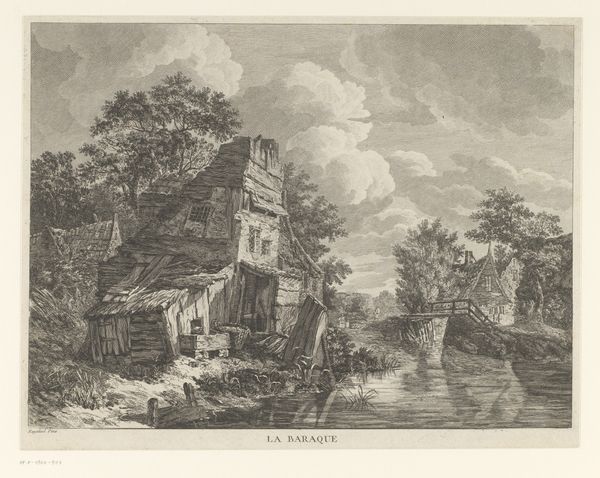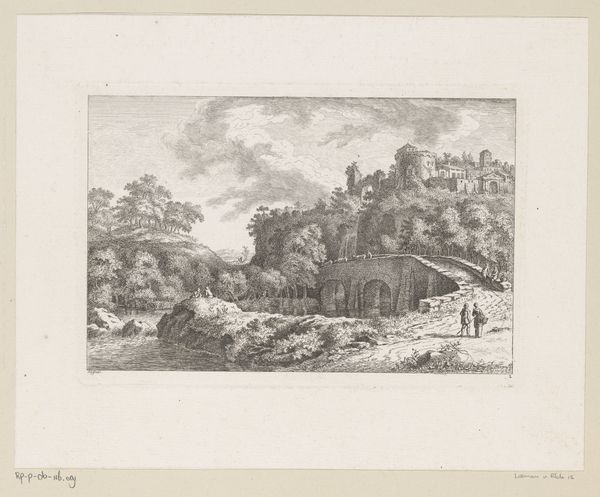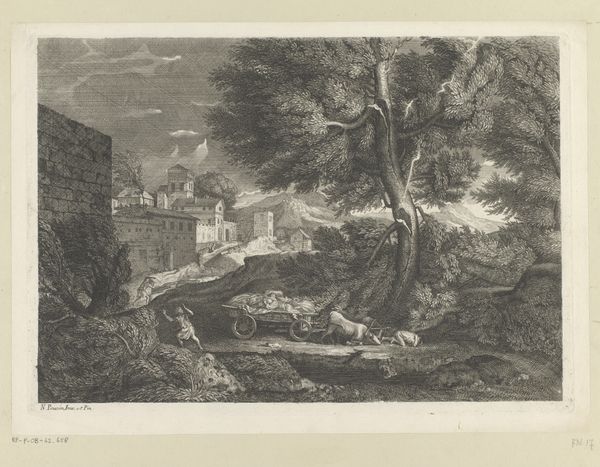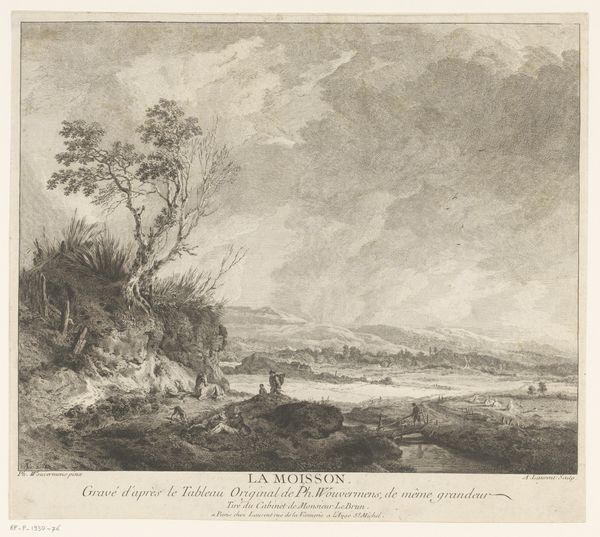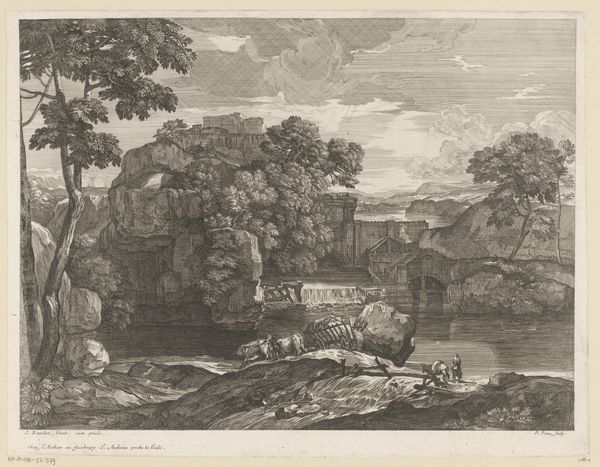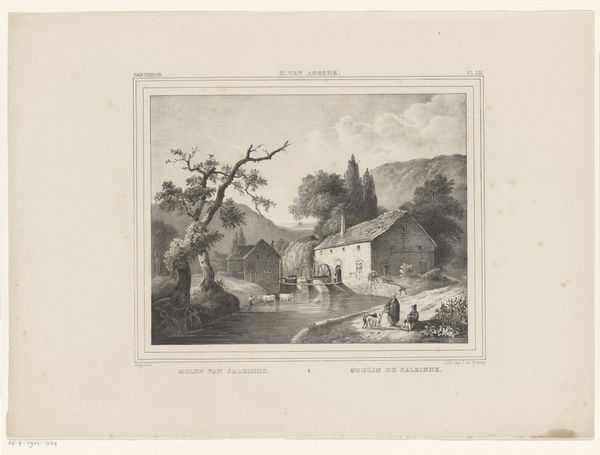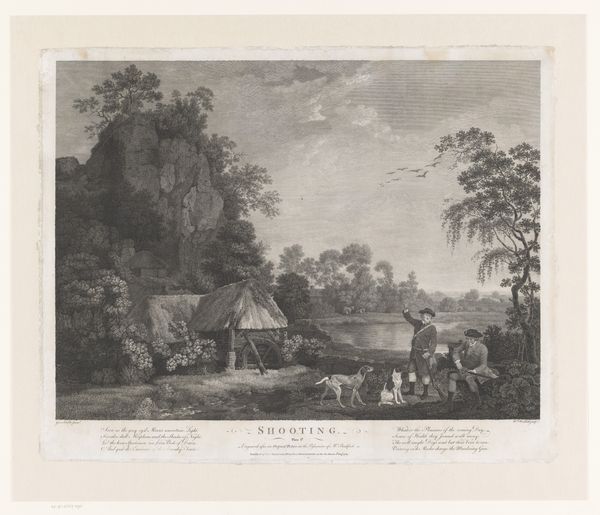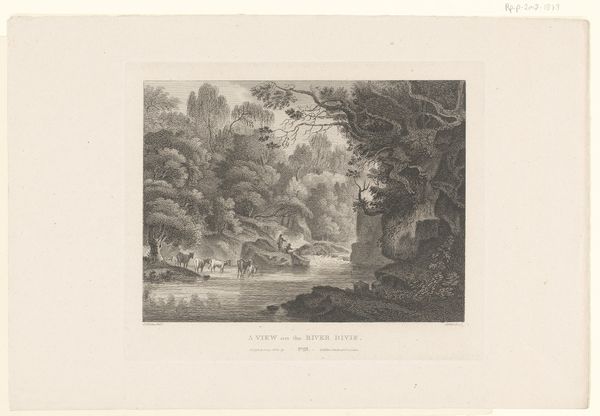
print, etching
#
baroque
# print
#
etching
#
old engraving style
#
landscape
#
genre-painting
Dimensions: height 390 mm, width 460 mm
Copyright: Rijks Museum: Open Domain
Editor: This is "Gezicht op een huis met watermolen aan een vijver," an etching by Jacques Philippe Le Bas, from 1744. It's a lovely scene, almost idyllic, but with this strong sense of… decay, maybe? What stands out to you when you look at it? Curator: The ruin, certainly. But more than that, it’s the *promise* of the ruin, etched into every beam and stone. Le Bas offers us not just a building, but a cultural memory in the making. Watermills weren’t merely functional; they represented a social and economic nexus, a kind of village heart. Look at how he’s rendered the details - the wear on the wheel, the disrepair, they become emblems of time and change. Editor: So, it’s less about the beauty of the scene, and more about what the image represents about the passage of time? Curator: Precisely. It's tapping into something deeper about societal shifts. Think about the cultural implications; an aging watermill can symbolize economic decline, rural depopulation, or the fading of old traditions. Le Bas invites us to contemplate these changes, perhaps even mourn a past that is quickly becoming just a memory. Do you see that emotional weight in the piece? Editor: I do now, especially knowing that these mills were so central to community life. It makes it much more than just a pretty picture. Curator: It’s about finding echoes of shared experiences through these recognizable symbols. The ruin isn't just a physical state, but an emotional and social one, and that is why this image has persisted over time. Editor: I see the cultural memory being evoked here. Thank you. Curator: And thank you. Looking at it with fresh eyes reminds me of how potent these seemingly simple images can be.
Comments
No comments
Be the first to comment and join the conversation on the ultimate creative platform.
